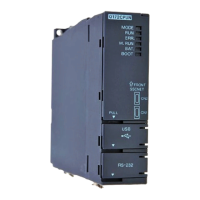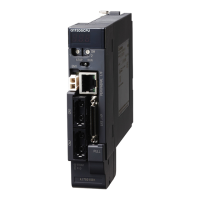16
TROUBLESHOOTING
16.1 Troubleshooting Basics
16 - 2
9
DEVICE DESCRIPTION
10
MULTIPLE CPU SYSTEM
OVERVIEW
11
MULTIPLE CPU SYSTEM
CONFIGURATION
12
CONCEPT OF MULTIPLE
CPU SYSTEM
13
COMMUNICATIONS
BETWEEN CPU
MODULES
14
PARAMETERS ADDED
FOR MULTIPLE CPU
SYSTEMS
15
STARTING A MULTIPLE
CPU SYSTEM
16
TROUBLESHOOTING
16.1 Troubleshooting Basics
First, perform the following three steps.
(1) Visual check
Check the following:
1) The operating states of the external devices
2) The operating state of the external power supply
3) Whether the cables are connected normally
4) The LEDs on the C Controller module and power supply module to see their
operating states
Example: The RUN and ERR. LEDs on the C Controller module
The POWER LED on the power supply module
5) Whether the LEDs on the input and output modules turn on reacting to
respective input (X) and output (Y) states
6) Whether each module is securely mounted to the base unit
After checking 1) to 6), connect the C Controller module to external devices and
check the user program operation.
(2) Checking the fault
Check how the fault state changes by the following operations.
1) Switch the input (X) status between ON and OFF to check if it can be read out
by a test program.
2) Switch the output (Y) status between ON and OFF to check if the external
device status changes accordingly.
(3) Narrowing down the range
From the results of the above (1) and (2), hardware and/or software that may cause
the error can be confirmed.
Narrow down the range from the following to identify the hardware or software, and
troubleshoot the problem.
1) C Controller module
2) External device
3) Module (except C Controller module)
4) Cable
5) User program

